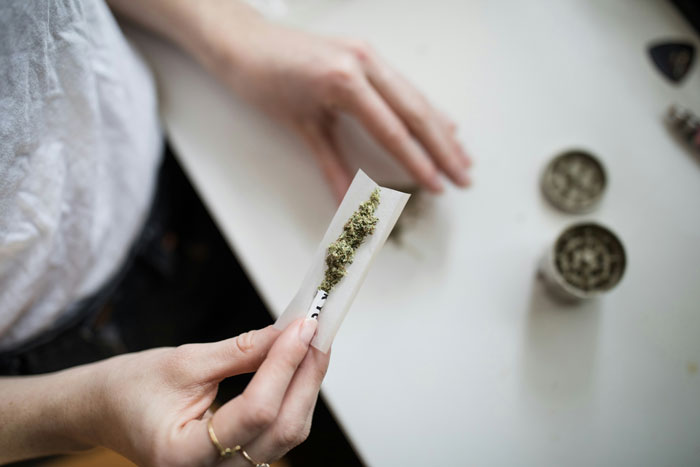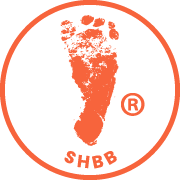Separate Alcohol and Drugs Facts from Fiction During National Drug and Alcohol Facts Week
The National Institute on Drug Abuse designates March 18-24, 2024, to educate teens and children about alcohol and drug facts through National Drug and Alcohol Facts Week. This educational and awareness week explores the science and facts behind addiction, misuse, and abuse of drugs and alcohol.
Mehlville Fire Protection District supports this annual campaign. It encourages parents across the region to use the week to open a discussion with their children about the dangers of drugs and alcohol. Use our guide to engage, educate, and empower your children and teens.
Table of Contents:
Key Takeaways:
Drug or alcohol use may begin as a choice and spiral into an addiction. Talk to children and teens about the dangers of drug and alcohol use. Know the street lingo for these drugs and open a dialogue about abuse, misuse, and addiction.
What Is Addiction?
Teens hear the terms “alcohol addiction” and “drug addiction,” but do they know the meaning of addiction? What is addiction, and, most importantly, what is the science behind addiction?
The National Institute on Drug Abuse provides the simplest definition of addiction. Per the Institute, addiction is “…a chronic, relapsing disorder characterized by compulsive drug seeking and use despite adverse consequences. It is considered a brain disorder because it involves functional changes to brain circuits involved in reward, stress, and self-control.”
 The Institute explains that the risk of addiction is influenced by several factors, including peer pressure (or a teen’s circle of friends), poverty, school performance, lack of parenting or supervision, and availability of drugs/alcohol. Genetics also plays a role. The Institute notes that genetics “…account for between 40 and 60 percent of a person’s risk of addiction.”
The Institute explains that the risk of addiction is influenced by several factors, including peer pressure (or a teen’s circle of friends), poverty, school performance, lack of parenting or supervision, and availability of drugs/alcohol. Genetics also plays a role. The Institute notes that genetics “…account for between 40 and 60 percent of a person’s risk of addiction.”
Addiction also is influenced by the administration of the drug. Smoking or injecting a drug allows the “high” to happen quickly, and the Institute notes that this quick response could lead an individual to continue seeking it out.
These Are the Most Addictive Drugs
Many sources agree that some drugs are highly addictive. What are the most addictive drugs? The top five most addictive drugs are:
- Heroin and opioids
- Cocaine
- Nicotine
- Barbiturates
- Alcohol
Heroin is considered the most addictive drug in the world.
What Is the Number One Drug Used by Teens?
Alcohol use was by far the most common drug used by teens. Vaping nicotine was the second most popular drug of choice. While teens might not consider alcohol to be a drug, it is a drug, just like nicotine and marijuana. More than half of high school seniors admitted to drinking alcohol in the past year.
Is Drug Addiction a Disease or a Choice?
Addiction is considered a disease by the American Medical Association. While drug and alcohol use might begin as a personal choice, full-blown addiction manifests when the body becomes dependent on a specific substance.
The rush of good feelings–the high–from a particular substance encourages the brain to need it again and again. The use transforms into abuse and then full-blown addiction. Quitting the drug leads to terrible withdrawal symptoms, and the cycle persists.
Trying a drug is a choice. Addiction to the drug is a disease that is difficult to treat. Some people with a substance use disorder die from the damage to their body, or they never fully gain sobriety and succumb to an overdose. Others, though, beat the odds and remain sober throughout their life. Yet, the battle to override the brain’s link to the drug and remain clean and drug-free likely persists day after day.
Is Vaping Addictive?
Teens might assume that vaping is safe because it doesn’t lead to inhaling smoke and the chemicals linked to cigarettes. Vaping involves a variety of substances, some of which are incredibly addictive. Is vaping addictive? Yes!
Nicotine is one of the most addictive substances, and vaping nicotine is the second most popularly consumed substance among teens. Cannabis also can be vaped. Teens should never assume that vaping is harmless. The habit can become addictive, and vaping is linked to health conditions including:
- Popcorn lung
- Lung injury
- Asthma
Street Drugs and Prescription Drugs: Know the Names and the Dangers
Teens will likely encounter numerous drugs beyond alcohol and vaping substances (like cannabis). Parents might hear some strange names, which are references to street drugs or even prescription drugs. Help educate children about some of the drugs they might encounter from friends or at parties and teach them the dangers of these addictive substances.
What Are “Bath Salts?”
Bath salts do not refer to relaxing bath products. The Drug Enforcement Agency explains that this drug refers to synthetic stimulants which look like bath salts (thus, their street name). Bath salts have a high similar to cocaine, Meth, and Ecstasy, according to the DEA. While the drug is generically referred to as “bath salts,” they also have many different street names. Teens might refer to the salts as Meow Meow, Red Dove, Stardust, and Blue Silk. Bath Salts can be eaten, injected, smoked, or snorted.
What Are Prescription Stimulants?
Prescription stimulants are another drug abused by teens and college students. These drugs refer to stimulants that a doctor prescribes for conditions like ADHD: Ritalin and Adderall. Some brand names include Concerta, Vyvanse, and Focalin.
These drugs help children or teens with ADHD focus and feel calmer; they have the opposite effect on individuals without an ADHD diagnosis. They are commonly abused to enhance concentration and wakefulness. However, they can cause agitation, heart issues, and other health concerns.
What Is MDMA?
The DEA classifies MDMA as both a stimulant and a psychedelic. This drug was commonly consumed at raves in the 90s and Y2K when it was called Ecstasy. MDMA is often called Molly, although street names tend to be creative (like Hug Drug). MDMA is taken in pill form, and, per the DEA, the pills are often brightly colored.
About Crystal Meth (or Meth)
Meth is, unfortunately, a commonly abused drug in Missouri. Methamphetamine is a powerful stimulant and very addicting. Meth can be smoked, injected, snorted, or taken in pill form. Some common street names for Meth include Biker’s Coffee, Ice, Crystal, and Shards.
About Cocaine
Cocaine tends to be a more expensive drug, but that doesn’t mean teens won’t come across it. Cocaine (coke, for short) is a white powder that acts as a powerful stimulant. Cocaine is typically snorted, but it also can be smoked or injected. Some street names include Blow and Snow.
Crack is a form of cocaine that looks like small rocks. Crack can be smoked or injected.
Marijuana and Drugged Driving
In the state of Missouri, consuming marijuana in various forms is no longer illegal. The legality of marijuana, however, leads to another discussion and issue: drugged driving.
Teens understand that driving under the influence of alcohol is illegal. It is also illegal to drive under the influence of drugs, including marijuana. Drugged driving causes impairment on the road, which could lead to accidents and fatalities.
Teach children to NEVER DRIVE UNDER THE INFLUENCE.
Alcohol Abuse Statistics
Alcohol is the most consumed drug among teens. Alcohol consumption might begin out of curiosity or peer pressure, but it could spiral into a larger problem. Alcohol consumption among teens and young adults is a continued concern.
The Definition of Binge Drinking
The 2022 National Survey on Drug Use and Health revealed that 7.8 percent of women aged 12-20 reported that they engaged in binge drinking the previous month, while 7.5 percent of men in the same age group revealed the same. Binge drinking is defined as consuming four or more drinks in a sitting (for women) and five or more drinks in a sitting (for men).
High-intensity drinking was only reported among 2.4 percent of 12th graders (high school seniors). However, even a small prevalence of heavy drinking for this group could be alarming for parents.
Educate, Empower, and Empathize: Talk to Children and Teens About Drugs and Alcohol
Mehlville Fire Protection District encourages parents to educate, empower, and empathize when they talk to children and teens about drugs and alcohol. Teach children about the harm and dangers of these substances, how choice can spiral into addiction, and empower them to make educated decisions about their health and life. Peer pressure can be powerful; empathize with teens and acknowledge how to stand against the power of influence. Personal experiences and stories from your youth and teens can help them understand that parents were once in their place; start a dialogue today.

